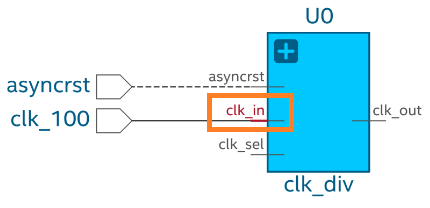Visible to Intel only — GUID: ibi1721256264316
Ixiasoft
1.1. Compilation Overview
1.2. Design Analysis & Elaboration
1.3. Design Synthesis
1.4. Design Place and Route
1.5. Incremental Optimization Flow
1.6. Fast Forward Compilation Flow
1.7. Full Compilation Flow
1.8. HSSI Dual Simplex IP Generation Flow
1.9. Exporting Compilation Results
1.10. Clearing Compilation Results
1.11. Integrating Other EDA Tools
1.12. Compiler Optimization Techniques
1.13. Compilation Monitoring Mode
1.14. Viewing Quartus Database File Information
1.15. Understanding the Design Netlist Infrastructure
1.16. Using Synopsys* Design Constraint (SDC) on RTL Files
1.17. Using the Node Finder
1.18. Synthesis Language Support
1.19. Synthesis Settings Reference
1.20. Fitter Settings Reference
1.21. Design Compilation Revision History
2.1. Factors Affecting Compilation Results
2.2. Strategies to Reduce the Overall Compilation Time
2.3. Reducing Synthesis Time
2.4. Reducing Placement Time
2.5. Reducing Routing Time
2.6. Reducing Static Timing Analysis Time
2.7. Setting Process Priority
2.8. Reducing Compilation Time Revision History
Visible to Intel only — GUID: ibi1721256264316
Ixiasoft
1.16.4.1.1. SDC-on RTL Example: Targeting Pins of Top-level Instances
In certain scenarios, it is necessary to constrain pins of top-level instances. SDC-on-RTL constraints allow you to define constraints at module boundaries using either of the following elements:
- inst_port—these elements are retrieved in collections as a result of applying the get_pins filter. These elements allow you to target the inputs and outputs of modules, similar to addressing pins on registers.
Figure 130. inst_port Constraint
{inst_port::Test::U0|clk_in} - port—these elements are in the module itself and are primarily used for targeting ports in entity-bound constraints. You can use the get_ports filter for this purpose.
Figure 131. port Constraint
{port::Test::U0|clk_in}
For example, to define clocks and reset inputs, you can use the get_pins Tcl command followed by the hierarchical pin name to filter each pin:
get_pins U0|clk_in
This Tcl command returns the input pin clk_in in the instance U0.
Figure 132. Targeting Pins of Top-level Instances

Similarly, you can target other pins of the same instance and apply necessary constraints as shown in the following:

create_clock -name clk_input -period 10 [get_pins U0|clk_in] create_generated_clock -name clk_output -source [get_pins U0|clk_in] -divide_by 2 [get_pins U0|clk_out]